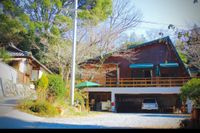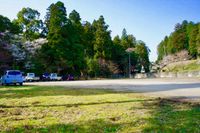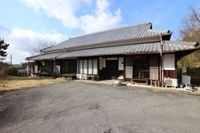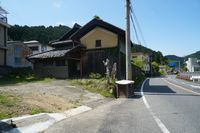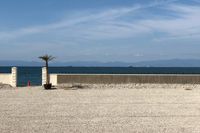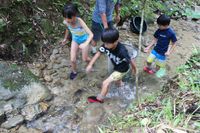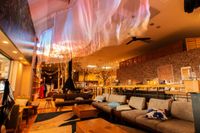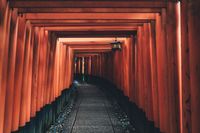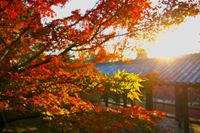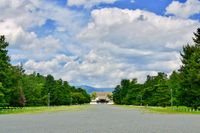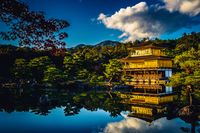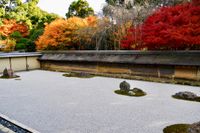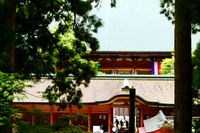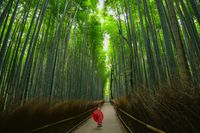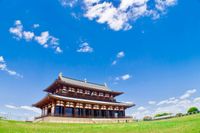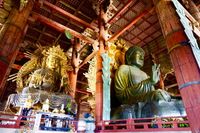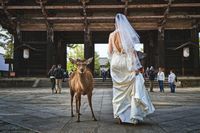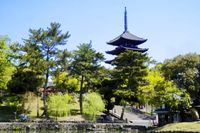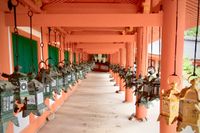Daigoji Temple
京都府/京都市伏見区醍醐東大路町

Description
This is a Shingon sect temple built by Shobo in 874 AD, and is a branch temple of Shingon sect head temple. Yakushi Nyorai is the primary object of worship, and the temple is registered as a World Heritage Site. Although it was destroyed during the unrest of the Muromachi Era(1336-1573), it was reconstructed as the stage of a famous play starring the hero Toyotomi Hideyoshi, known as the "Daigo no Hanami". It is also famous for cherry blossom viewing.
Homepage
Address
Nearby Car Night Spots
Shin Meishin Suzuka PA (inbound) RV Station Suzuka * With Power!
¥2,200〜
/ per nightMie Yamamotocho, Suzuka-shi
4.3
(160)(Bonfire BBQ) Chita Mihama Noma Beach Station
¥3,500〜
/ per nightAichi Noma, Mihamacho, Chita County
4.7
(42)Nearby Activities
Catch and eat char in a beautiful valley in the mountains
¥2,000〜
/ per personShiga Fujise, Taga-cho Inukami-gun
3.0
(0)All you can eat rice balls and rice reaping in the rice field in the mountains
¥2,000〜
/ per personShiga Fujise, Taga-cho Inukami-gun
3.0
(0)Ranking Stations
Shin Meishin Suzuka PA (inbound) RV Station Suzuka * With Power!
¥2,200〜
/ per nightMie Yamamotocho, Suzuka-shi
4.3
(160)Vanlife BASE | 45 min. from Narita Airport / Perfect for campervan travel/A seaside town rich in nature/Japanese countryside town/welcome traveler
¥7,000〜
/ per nightChiba Koseki, Kujukuri-machi, Sambu-gun
5.0
(64)(Bonfire BBQ) Chita Mihama Noma Beach Station
¥3,500〜
/ per nightAichi Noma, Mihamacho, Chita County
4.7
(42)Nearby Drive Spots
Fushimi Inari Taisha Shrine
Built in 711 AD, this shrine is the main central temple of the Inari Shrine group, of which there are about 30,000 in Japan. The main Gods are Ukanomitama no Mikoto , Satahiko no Okami, Omiyanome no Okami, Tanaka no Okami, Shi no Okami, known as the Inari great Gods. The shrine has long been known as a place to pray for wish for abundance, and the countless red/orange Torii gates were built to express the power of abundance of the Inari great shrine God, and is known as the "Thousand Torii gates". It was also the scene for the film "Memoirs of a Geisha".
Tofukuji Temple
This is a Rinzai sect temple built in 1236 by Enni, and is a branch temple of Rinzai Tofukuji sect head temple. The main object of worship is Shaka Nyorai, and the name takes one character from the Todaiji Temple and Kofukuji Temples respectively. The oldest gate in Japan is here, which was rebuilt by Ashikaga Yoshimochi in 1425, and is a designated national treasure. In addition from the Tsuten bridge, provides optimum views of the vivid autumn leaves, and is said to be the best autumn leaf viewing spot in Kyoto.
Kiyomizu-dera Temple
This is a Hosso sect temple built by Enchin in 778 AD. The temple is built is reverence to Senju Kannon(1000 Armed) and is registered as a World Heritage Site. There is also a 13 meter high famous hall known as the "Kiyomizu Stage", which was built under the instruction of Tokugawa Iemitsu, where it became the stage for performances such as Gagaku classical music, Noh theatre, Kyogen and Kabuki. The temple can be enjoyed in all four seasons with cherry blossoms, greenery, autumn leaves and snow views during the respective four seasons.
Byodoin Temple
This is a temple built in 1052 by Fujiwara Yorimichi and is registered as a World Heritage Site. The main object of worship is known as Amida Nyorai, and displays the luxurious aristocratic culture of Fujiwara clan. In the central island of the pond, there is what is known as the phoenix temple, and it appears as if there is a palace floating in the middle of the pond in a treasure paradise. You can see the phoenix design on 10 yen coins and 10,000 yen notes.
Nagarasan Onjoji Temple
This is a temple that was built in the 7th century under the instruction of Prince Yota. It is the head temple of the Tendai-jimon sect. From ancient times, battles and conflicts were waged with Hiei mountain Enryakuji Temple, and was confiscated by Toyotomi Hideyoshi. It is known as the "Phoenix Temple" due to overcoming numerous hardships and being rebuilt each time. Starting with the main hall, the temple contains 10 national treasures and 42 items of designated cultural importance.
Omi Jingu Shrine
This is a shrine built in 1940 to commemorate the 2600th year of the Emperor Jinmu, who was crowned in 660 BC. The temple God is known as Emperor Tenji, who made the trip from Asuka to Omi in 667 AD. After the Emperor Tenji wrote the Ogura Anthology of One Hundred Tanka‐poems by One Hundred Poets, it became a venue for playing Karuta (a variety of card games, normally played around new years). It is also the setting for the anime "Chihayafuru", and many fans of the anime make the pilgrimage here.
Kyoto Imperial Palace
For 500 years between 1392 and 1869, the various generations of emperors lived here, where public ceremonies were held and administration took place. Originally, the place began as a small hall known as "Tsuchimikado Higashi no Toindono", but was expanded by Ashikaga Yoshimitsu, an important Shogun in Japanese history. It was established by Oda Nobunaga and Hideyoshi Toyotomi, to become the place as it is seen today. It ended as a place of government when the Emperor Meiji and royal family moved to Tokyo in 1869, and became open to the public from August 2016.
Kinkakuji Temple(Golden Pavilion)
This is a Rinzai sect temple built by Ashikaga Yoshimitsu in 1397. Kannon Bosatsu is the main object of worship, and is registered as a World Heritage Site. The golden Shariden temple known as "Kinkaku" in the centre of the Garden is said to represent paradise in this world. In the Kyoko-chi Pond, there are several stone islands known as Ashihara-jima islandTsurushima islandKameshima island dedicated to the feudal lords who served Ashikaga Yoshimitsu, the Shogun whose home the temple was. Along with Ginkakuji Temple(Silver Pavilion), these two temples are the great symbols of the Muromachi era(1336-1573).
Ryoanji Temple
This is a Rinzai sect temple built by Hosokawa Katsumoto in 1450. The main object of faith is Shaka Nyorai, and is registered as World Heritage Site. The famous stone water garden known as "Karesansui Garden" is said to represent a Zen landscape, and is arranged such that one cannot see all 15 stones at the same time. The area became famous when UK's Queen Elizabeth II visited here in 1975.
Mount Hiei Enryakuji Temple
This is a temple of Tendai that was founded by Saicho in 788 AD. It is also registered as a World Heritage Site. Along with Mount Koya Kongobuji Temple, it became the centre for Heian Buddhism and a place of training for figures such as Honen (founder of the Jodo sect), Shinran (founder of the Jodoshin sect), Eisai(Founder of the Rinzai sect), Dogen (founder of the Soto Sect), Nichiren (Founder of Nichiren Sect). Because of this it is also known as the "Mother Mountain of Japanese Buddhism" and sacred buddhist teachings still continue to this day.
Hiyoshi Taisha Shrine
This is a shrine built in 91 BC. The western hall contains the main powerful God with the eastern hall contains the Mount Hiei guardian God. This is the main hub shrine of the 3,800 Hiyoshi, Hie and Sannno Shrines in Japan. There are numerous cultural items associated with monkeys, as they are considered as underlings to the shrine Gods. The area is also famous for autumn leaf viewing with around 3000 autumn leaf trees.
Tenryu-ji Temple
This is a temple built under the instruction of Ashikaga Takauji in 1345, and is a branch temple of Rinzai Tenryu-ji sect head temple. It was built as a place of relaxation for Emperor Godaigo. The main object of worship is Shaka Nyorai, and is registered as a world heritage site. The area is also popular for autumn leaf viewing, as there are amazing views of the Arashiyama autumn leaf trees.
Arashiyama Bamboo Grove
This is a bamboo forest of around 400m in Sagano. This was an area opened by aristocrats and noblemen in the Heian era(794-1185), and this area loved by the upper echelons of society back then still exists today, around 1,000 years later. This symbol of Kyoto brings in many tourists. It is recommended that you visit in early morning or later evening to be able to enjoy at leisure.
Kifune Shrine
This is the head shrine of the Kifune Shrine group, of which there are around 450 in Japan, although the construction date is unknown. The main shrine God was historically known as a rain God named "Takaokami no Kami", and worshipped as a bringer of rain and bountifulness. It is also said that drawings of horses were made on wood here, giving birth to the "Ema" which are the wooden plaques that one can see at many shrines with prayers written on them. Around 300 meters away from the main hall, one can visit "Yui Shrine", where there is another God that is said to bring destined couples together, known as Iwanagahime no Mikoto. The area is popular amongst couples.
Heijo Palace
A town built by Empress Genmei in 710 AD, it is a registered world heritage site. The town was created as a capital to practice the law of the land and was 2,500 hectares in size. The model of the city was based on China's city of Choan City. The Suzaku gate and imperial council hall have been restored, allowing visitors to feel the history of the original town.
Lake Biwa
This is a lake with the largest reservoir capacity in Shiga prefecture. It is said that the lake formed from around 4,000,000 to 6,000,000 years ago and provided a water supply to those that lived in the area from the Jomon period. The name comes from the fact that the shape of the lake resembles a Japanese musical instrument known as the Biwa.
Todaiji Temple
This temple was built in 741 AD under the instruction of Emperor Shomu, and is a branch temple of the Kegon sect head temple. The temple's buddha statue known as the "Daibutsu of Nara" was built, and became a place of hope and support from Emperor Shomu, during famine, earthquakes and illness of the time. There are many items of cultural importance such as the largest wooden buddhist temple in the world, and is registered as a national heritage site.
Nara Park
Registered as a World Heritage Site, this is a famous deer park. Around 1,200 wild deer inhabit the area, and is popular for feeding the deer with "Deer senbei" (a type of savoury biscuit). The deer is said to be a god of Kasuga Taisha Shrine, which is in the local area, and Takemikazuchi is said to have come to the area from Kashima Jingu Shrine in Ibaraki riding on a deer when the shrine was built.
Kofukuji Temple
This is a temple built in 669 AD by Fujiwara Fuhito, amongst others, and is a branch temple of the Hoso sect main temple. The main object of worship is known as Shaka Nyorai, and is registered as a national treasure. It was considered as one of the four great temples during the Nara period(710-794) and one of the seven major temples during the Heian period(794-1185), and increased in prominence through sharing teachings with Kasuga Taisha Shrine. There are numerous cultural treasures such as the wooden deva king statue.
Kasuga Taisha Shrine
This is a shrine that was built in 768 AD to enshrine the Kasuga gods Nakatomi clan and Fujiwara clan. The Kasuga Gods are known as Takemi Kazuchi no Mikoto(Kashima Jingu Shrine), Futsunushi no Kami(Katori Jingu Shrine), Amenokoyane no Mikoto and Himegami(Hiraoka Shrine). It is the head temple of the Kasuga shrine group, of which there are around 1000 in Japan, and it is said that deer are the underlings to the shrine Gods, from the legend that Takemi Kazuchi no Mikoto rode here on a white deer. It is registered as a World Heritage Site.

